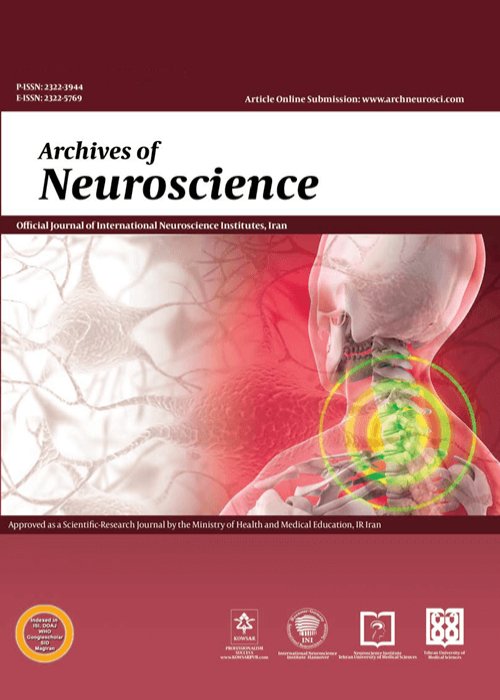Recombinant Tissue Plasminogen Activator Administration in Patients With Cerebrovascular Accident; A Case Series
Author(s):
Abstract:
Background
Cerebrovascular accident (CVA), as a debilitating neurological impairment, is one of the most common causes of death in adults. It is observed that CVA is less well-documented in the developing countries compared to the developed ones and most of the available data are based on case series..Objectives
The current study aimed to evaluate the effectiveness, feasibility, outcome, and safety of intravenous recombinant tissue plasminogen activator (IV rt-PA) administration in patients with acute ischemic cerebrovascular accident (CVA)..Patients and Methods
All CVA patients referred three hours after onset of symptoms to the emergency department (ED) of Shohadaye Tajrish Hospital, Tehran, Iran, from February 2012 to March 2014 were included. The following data were collected using specific check list: demographic data, chief complaint, signs and symptoms, medical history, risk factors, focused neurologic examination, and the National Institutes of Health CVA Scale (NIHSS). Then, all patients received 0.9 mg/kg of rt-PA as a bolus intravenous dose and intravenous infusion under close monitoring in the ED. Outcomes were categorized as good (complete reversal of focal neurologic deficit), not bad (partial reversal of focal neurologic deficit), death, and unknown (missed follow up). Data were analyzed by STATA software version 11..Results
Fifteen patients with the mean age of 56.7 ± 18.9 years included in the study (male 66.7%). The most common chief complaints were left side hemiplegia (46.67%), right side hemiplegia (40%), and decreased level of consciousness (13.33%), respectively. The most common affected vascular territory was medial cerebral artery (MCA) (86.67%). There was no significant relationship between age (P = 0.06), gender (P = 0.08), NIHSS score (P = 0.07), location of infarct (P > 0.99) and mean time from admission to beginning the drug administration (P = 0.55) with the outcomes. The outcome in 26.7% of the patients was favorable and death (two of four) happened due to intra cranial hemorrhage (ICH) as rt-PA side effects..Conclusions
It seems that intravenous rt-PA administered three hours after CVA is bemeficial in patients with CVA and by reducing the early evaluation time and brain imaging can overcome the CVA complications. However, any conclusion from this study is limited by the small population under study.Language:
English
Published:
Archives of Neuroscience, Volume:2 Issue: 2, Apr 2014
Page:
9
magiran.com/p1358317
دانلود و مطالعه متن این مقاله با یکی از روشهای زیر امکان پذیر است:
اشتراک شخصی
با عضویت و پرداخت آنلاین حق اشتراک یکساله به مبلغ 1,390,000ريال میتوانید 70 عنوان مطلب دانلود کنید!
اشتراک سازمانی
به کتابخانه دانشگاه یا محل کار خود پیشنهاد کنید تا اشتراک سازمانی این پایگاه را برای دسترسی نامحدود همه کاربران به متن مطالب تهیه نمایند!
توجه!
- حق عضویت دریافتی صرف حمایت از نشریات عضو و نگهداری، تکمیل و توسعه مگیران میشود.
- پرداخت حق اشتراک و دانلود مقالات اجازه بازنشر آن در سایر رسانههای چاپی و دیجیتال را به کاربر نمیدهد.
In order to view content subscription is required
Personal subscription
Subscribe magiran.com for 70 € euros via PayPal and download 70 articles during a year.
Organization subscription
Please contact us to subscribe your university or library for unlimited access!



